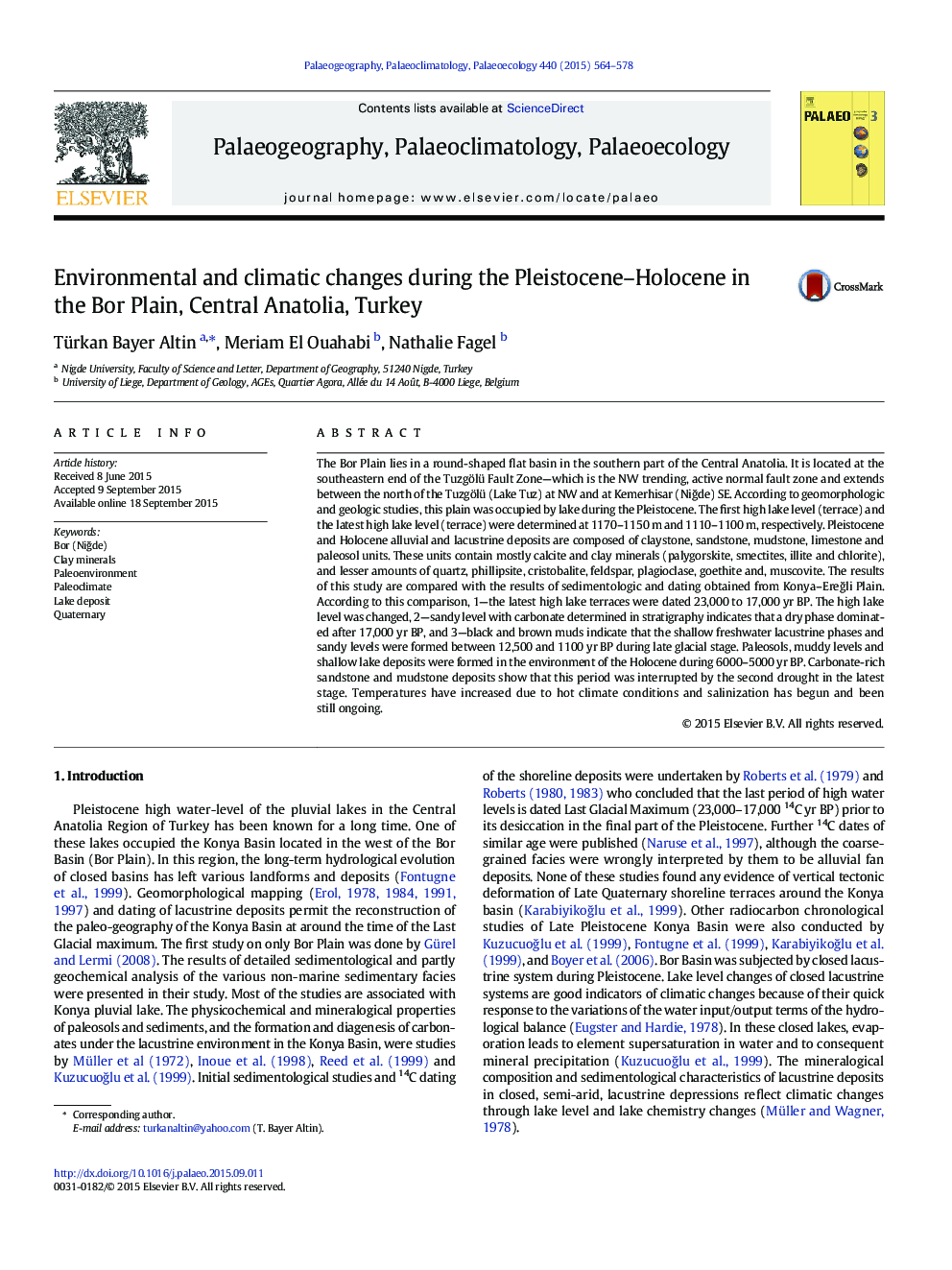| کد مقاله | کد نشریه | سال انتشار | مقاله انگلیسی | نسخه تمام متن |
|---|---|---|---|---|
| 6349556 | 1622150 | 2015 | 15 صفحه PDF | دانلود رایگان |
عنوان انگلیسی مقاله ISI
Environmental and climatic changes during the Pleistocene-Holocene in the Bor Plain, Central Anatolia, Turkey
ترجمه فارسی عنوان
تغییرات زیست محیطی و اقلیمی در طی پلیستوستن-هولوسن در دشت بور، آناتولی مرکزی، ترکیه
دانلود مقاله + سفارش ترجمه
دانلود مقاله ISI انگلیسی
رایگان برای ایرانیان
کلمات کلیدی
موضوعات مرتبط
مهندسی و علوم پایه
علوم زمین و سیارات
فرآیندهای سطح زمین
چکیده انگلیسی
The Bor Plain lies in a round-shaped flat basin in the southern part of the Central Anatolia. It is located at the southeastern end of the Tuzgölü Fault Zone-which is the NW trending, active normal fault zone and extends between the north of the Tuzgölü (Lake Tuz) at NW and at Kemerhisar (NiÄde) SE. According to geomorphologic and geologic studies, this plain was occupied by lake during the Pleistocene. The first high lake level (terrace) and the latest high lake level (terrace) were determined at 1170-1150 m and 1110-1100 m, respectively. Pleistocene and Holocene alluvial and lacustrine deposits are composed of claystone, sandstone, mudstone, limestone and paleosol units. These units contain mostly calcite and clay minerals (palygorskite, smectites, illite and chlorite), and lesser amounts of quartz, phillipsite, cristobalite, feldspar, plagioclase, goethite and, muscovite. The results of this study are compared with the results of sedimentologic and dating obtained from Konya-EreÄli Plain. According to this comparison, 1-the latest high lake terraces were dated 23,000 to 17,000 yr BP. The high lake level was changed, 2-sandy level with carbonate determined in stratigraphy indicates that a dry phase dominated after 17,000 yr BP, and 3-black and brown muds indicate that the shallow freshwater lacustrine phases and sandy levels were formed between 12,500 and 1100 yr BP during late glacial stage. Paleosols, muddy levels and shallow lake deposits were formed in the environment of the Holocene during 6000-5000 yr BP. Carbonate-rich sandstone and mudstone deposits show that this period was interrupted by the second drought in the latest stage. Temperatures have increased due to hot climate conditions and salinization has begun and been still ongoing.
ناشر
Database: Elsevier - ScienceDirect (ساینس دایرکت)
Journal: Palaeogeography, Palaeoclimatology, Palaeoecology - Volume 440, 15 December 2015, Pages 564-578
Journal: Palaeogeography, Palaeoclimatology, Palaeoecology - Volume 440, 15 December 2015, Pages 564-578
نویسندگان
Türkan Bayer Altin, Meriam El Ouahabi, Nathalie Fagel,
